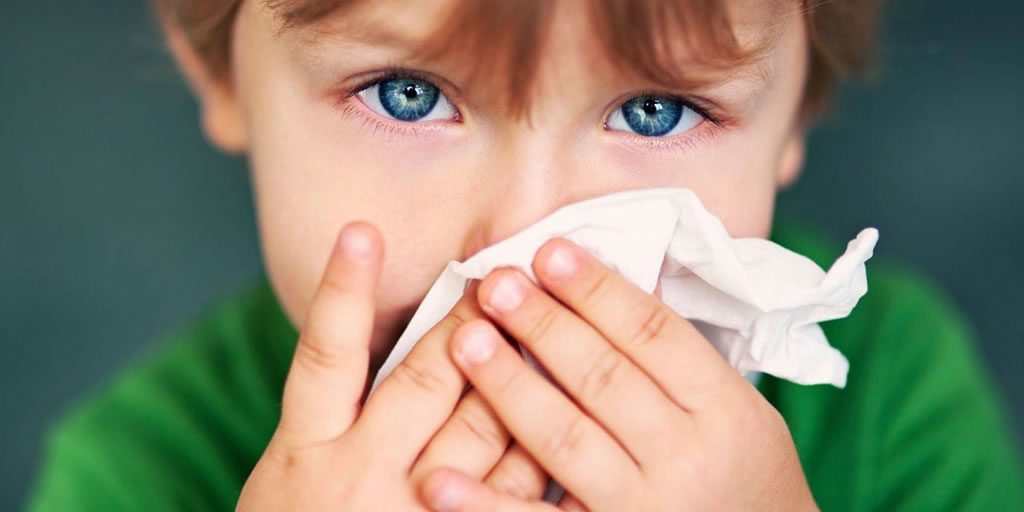Childhood Allergies

Over the past 50 years or so, there has been a large increase in the occurrence of allergic diseases (asthma, hayfever, atopic dermatitis and food allergy) in the population. This may be due to the increased use of antibiotics, childhood vaccinations, and a cleaner environment around us. As a result of the increase in allergic diseases, there has been an interest in preventing the onset of allergies and asthma, particularly in children.
There are many factors at play that can influence the development of allergies and asthma in children. These include family background, early introduction of certain foods, breastfeeding, infections, exposure to allergens and pollution, and exposure to tobacco smoke.
Early introduction of solid or allergenic foods has been associated with the development of allergic disease, particularly atopic dermatitis. Certain infections in babies, such as with RSV, has been associated with the development of asthma. Mothers who smoke during and after pregnancy put their babies at risk for the development of allergies and asthma.
Strategies That Have Been Shown to Reduce, Prevent or Delay the Onset of Allergic Diseases.
Exclusive breastfeeding. Although somewhat controversial, there is some evidence that exclusive breastfeeding during early infancy may be associated with reduction of allergy development. This may be due, at least in part, to the avoidance of cow’s milk and soy proteins in addition to the benefits of breast milk.
Hydrolyzed milk formulas. Hydrolyzed formulas use milk proteins that are broken down into small parts, and therefore are less allergenic. When used exclusively or when combined with breast milk, there seems to be some protective effect of these formulas on the development of allergic diseases.
Maternal avoidance of allergenic foods during pregnancy. There does not appear to be a long-term benefit for mothers to avoid highly allergenic foods during pregnancy, and may be harmful if the diet affects weight-gain of the mother and baby.
Maternal avoidance of allergenic foods during breast-feeding. There may be some benefit for nursing mothers to avoid highly allergenic foods during breast-feeding. Various studies have shown that avoidance of cow’s milk, egg, fish, peanut and soy proteins can reduce the occurrence of atopic dermatitis in young children. However, this strategy is likely to only work for highly motivated mothers of children at high risk for allergic disease (such as a strong family history of allergies), and should be done only under medical supervision to ensure the baby is receiving adequate nutrition.
Late introduction of solid and highly allergenic foods. There is some evidence that delaying introduction of solid foods until 4 months of age, and longer for highly allergenic foods, may reduce or delay the occurrence of atopic dermatitis.
Avoidance of house dust mite. Various studies have looked at implementing dust mite avoidance precautions during pregnancy, at birth, and in childhood in an attempt to prevent development of dust mite allergy and other allergic disease. This had little to no effect on long-term development of allergies, although results are somewhat mixed.
Avoidance of allergenic foods and house dust mite. One study looked at the effects of avoidance of dust mites as well as exclusive breastfeeding, use of a hydrolyzed milk formula, and delayed introduction of solid foods in infants from birth to one year of age. The results showed a decrease in asthma and atopic dermatitis at 4 years of age, and a decrease in asthma at 8 years of age.
Diet. Various studies have looked at the supplementation of various antioxidants, such as vitamins A, C and E, and selenium, in the prevention of allergic diseases. None of these show convincing evidence of prevention. Studies do consistently show benefit of omega-3 polyunsaturated fatty acids (as found in fish) in the protection against allergic disease.
Exposure to endotoxin. Various studies show a benefit with the presence of endotoxin, a protein that influences the immune system to not make allergies, during the early years of life. Household dogs are a common source of endotoxin, and the presence of 2 or more indoor dogs during childhood has been shown to reduce the occurrence of asthma.
Probiotics. Lactobacillus, a live bacteria found in yogurt, given during pregnancy and to infants for 6 months seemed to protect against atopic dermatitis for the first 2 years of life.
REF.
- Arshad SH. Primary Prevention of Asthma and Allergy. J Allergy Clin Immunol. 2005; 116:3-14.
- Arshad SH, Bateman B, Sadeghnejad A, et al. Prevention of Allergic Disease During Childhood by Allergen Avoidance: The Isle of Wight Prevention Study. J Allergy Clin Immunol. 2007; 119:307-13.
DISCLAIMER: The information contained in this site is for educational purposes only, and should not be used as a substitute for personal care by your GP. Please see your doctor for diagnosis and treatment of any concerning symptoms or medical condition.
Allergy Information for Children, Young People and their Families
Getting an allergy diagnosis can be a confusing and overwhelming time for families.
RCPCH has developed care pathways for children with allergic conditions. These pathways tell health professionals what they need to know in order to provide the best care possible for you (or your child).
